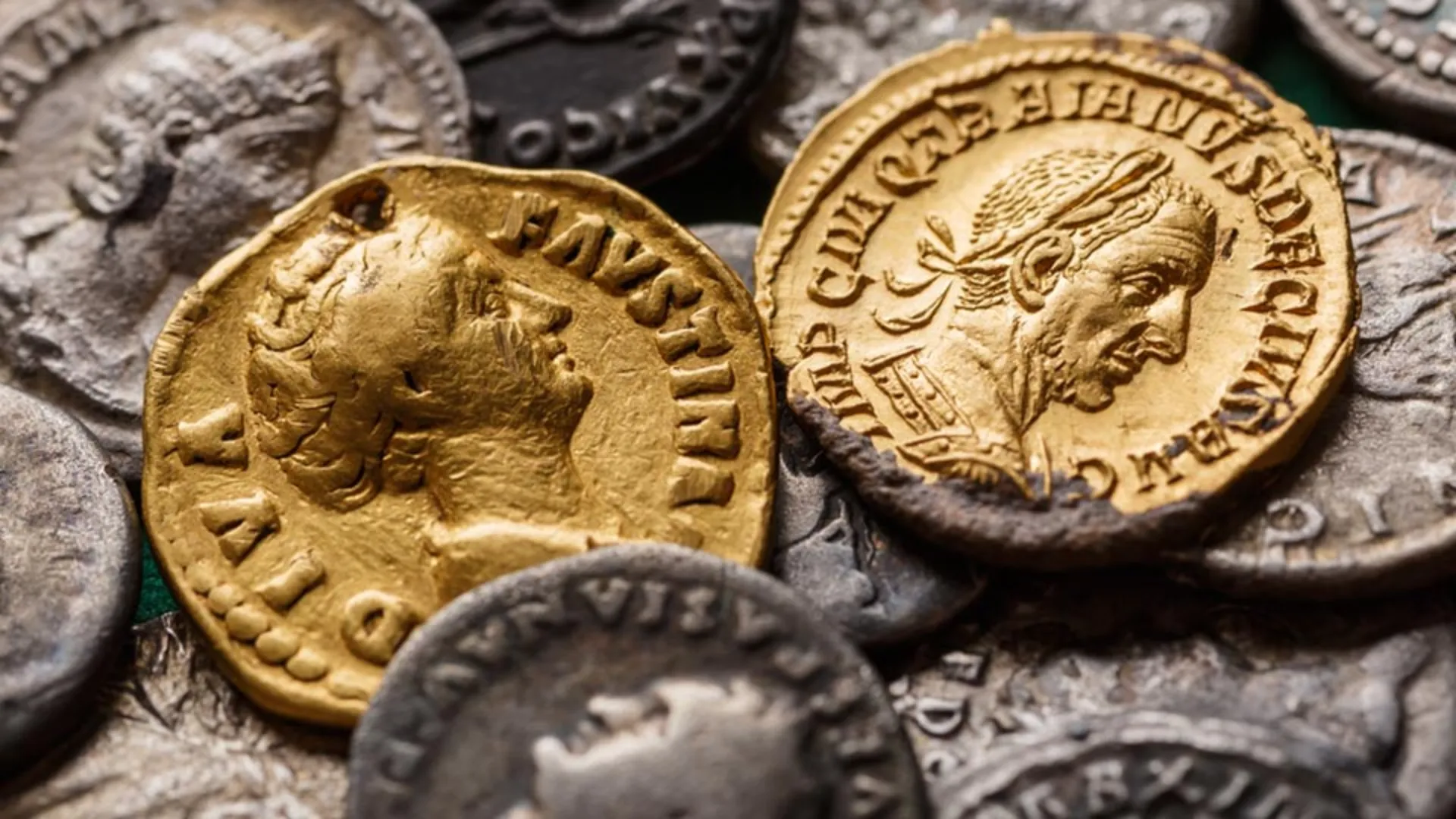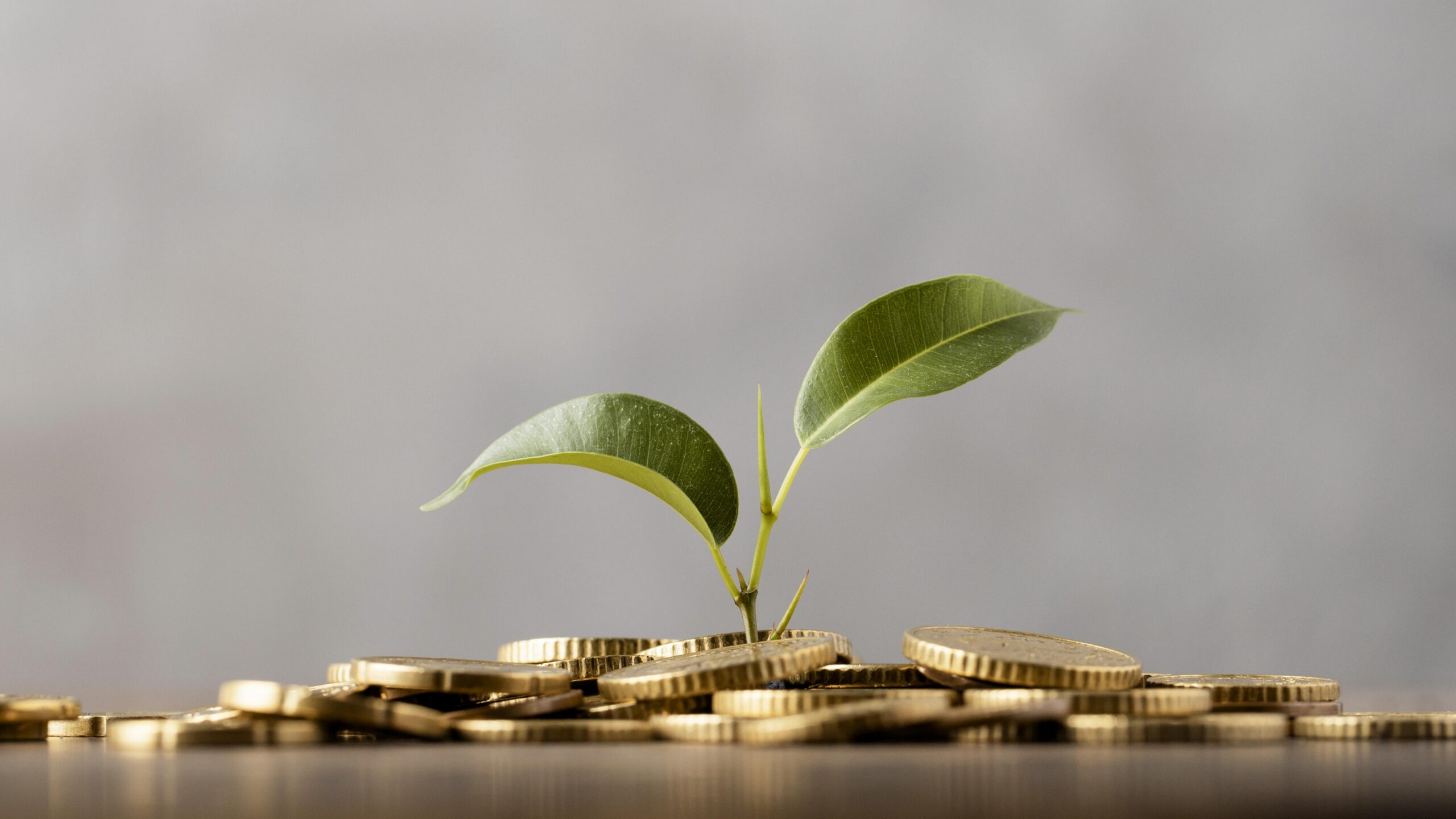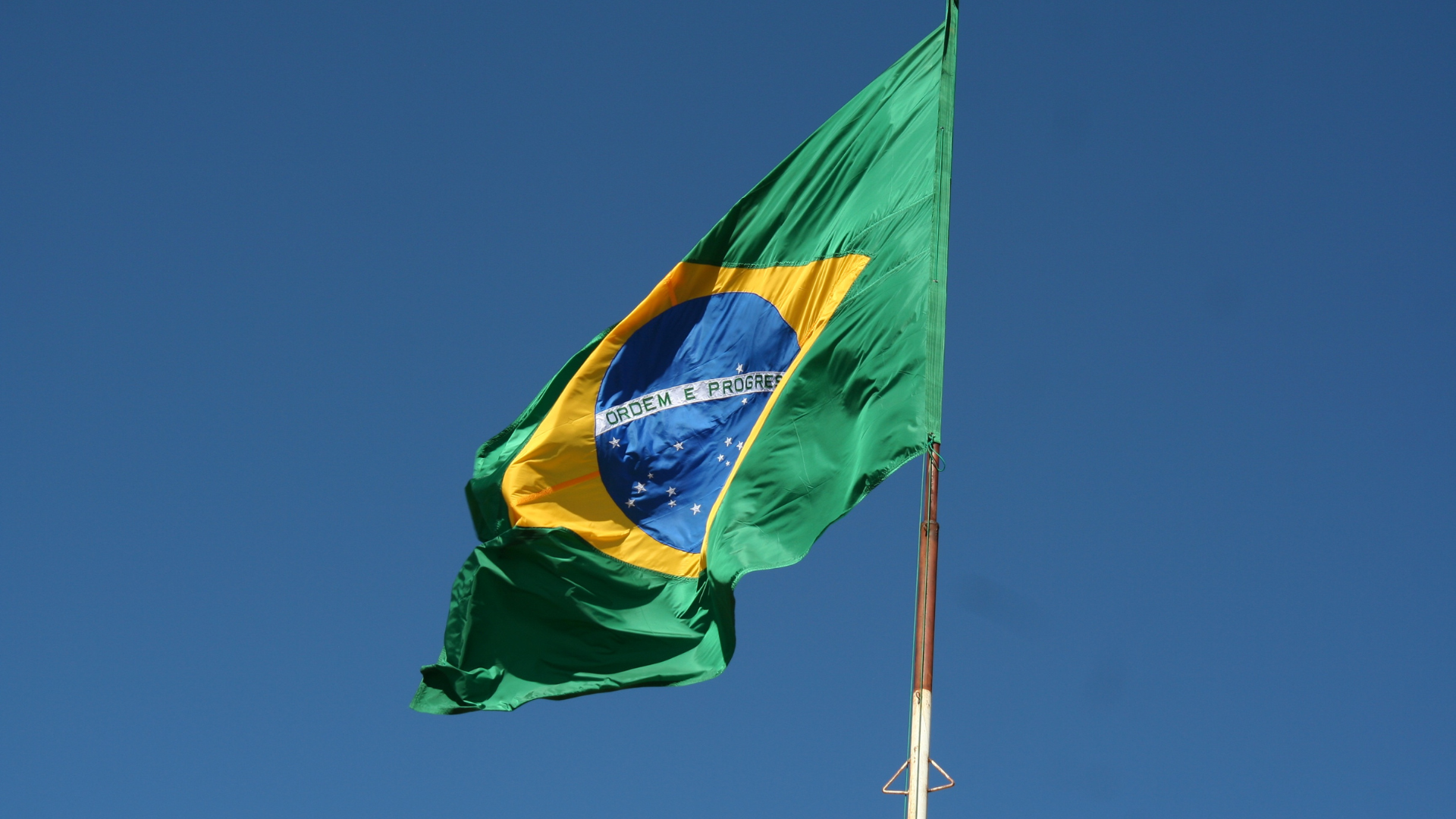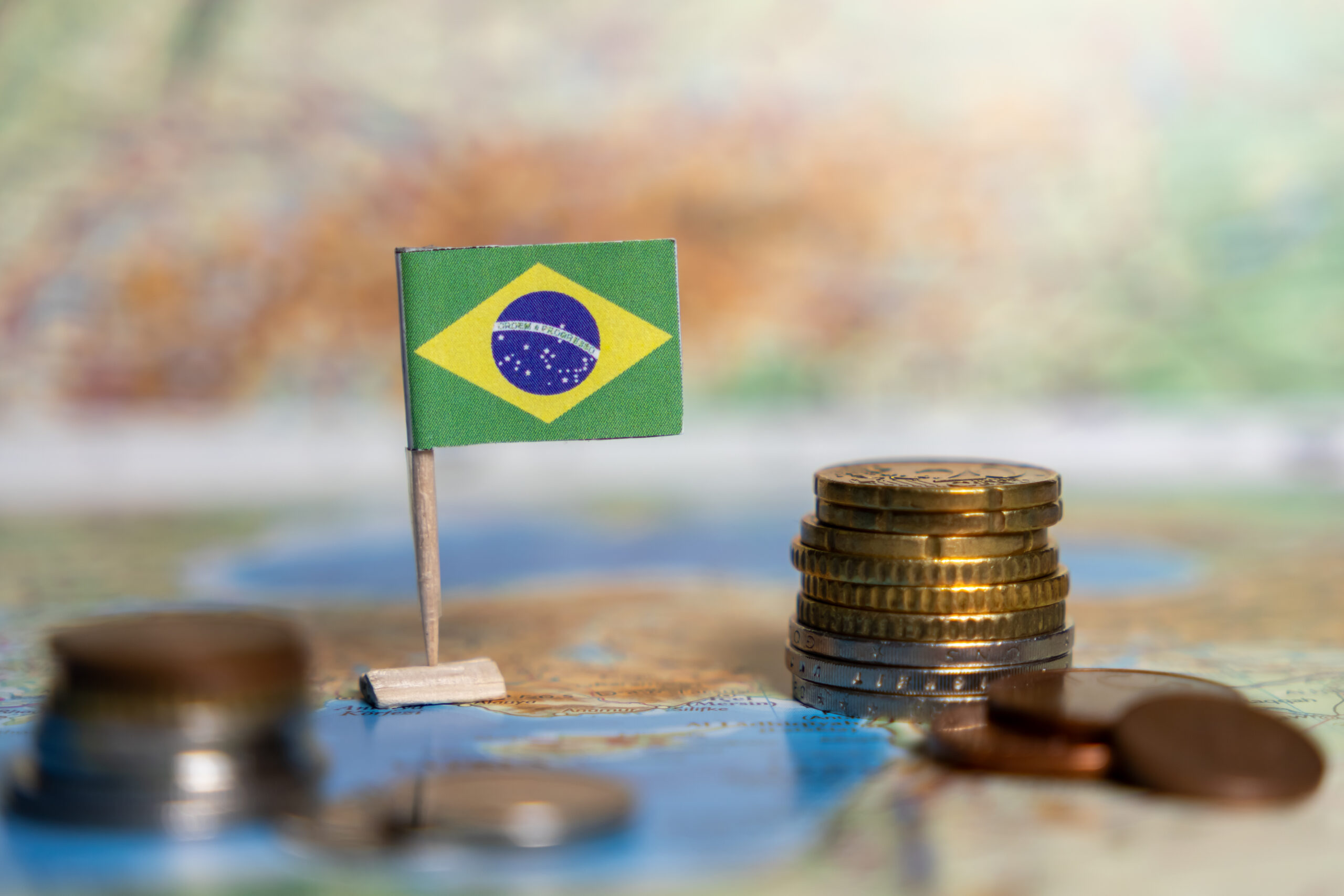Brief history of the monetary system
Dear investors,
Money is such an everyday thing that its ingenious nature can go unnoticed. Today's monetary systems are quite complex and, consequently, poorly understood by the vast majority of people, even investors.
In this letter, we provide a brief summary of how the world arrived at the current monetary system, with central banks and floating exchange rate regimes, and some reflections on the consequences of this system for our investments.
While acknowledging the topic's unusualness among the topics we typically cover, it arose because we recently approved an investment thesis for a company listed on the London Stock Exchange. The need to address currency conversions and exchange rate risks piqued our curiosity about this historical perspective.
Brief history of currency
Before the existence of currency, all commercial activity was conducted through the exchange of goods: a basket of bread for a piece of meat, an ox for two sheep. Each transaction was negotiated individually and faced two major difficulties: the first is that, if you had only one ox to trade, you would have to find someone who had the product you wanted to buy and, at the same time, wanted an ox; the second is that you would need to purchase a volume of goods equivalent to the value of an ox, which, at least while alive, is an indivisible unit of value.
The first evolution of this clumsy system was to find a product that was of common interest, easy to store, and easily divided into the quantities needed for each commercial operation. Various materials took on this role in ancient times. At the beginning of the Roman Empire, salt was used as currency for a period of time. Used by everyone as a seasoning and to preserve meat and fish, easy to store, divisible into any quantity, and reasonably valuable at the time, salt met all the requirements for serving as an intermediate product in commercial activities.
Even before the beginning of the Christian calendar, these intermediate products began to be replaced by precious metals, especially gold, which has since become a currency of universal value. A number of characteristics have made gold the material of choice as a universal currency. It is universally desired and rare enough that small quantities can represent significant value. It is divisible into any desired quantity and eternally durable. Despite the possibility of creating metal alloys by mixing it with other metals, as a way of counterfeiting what should be pure gold, methods for testing its purity have been known since antiquity, as evidenced by a story about Archimedes, a famous ancient mathematician.
In the 3rd century BC, the Greek king Hiero II commissioned a goldsmith to forge a gold crown, providing him with all the gold needed to create the piece. When the crown was delivered, suspicions arose that the goldsmith had stolen some of the gold for himself and replaced it with silver. The crown weighed exactly the same as the gold bar dedicated to its creation, but the purity of the metal could have been compromised.
Unwilling to destroy the new crown to test his suspicions, King Hiero II asked Archimedes to find a way to test the purity of gold without damaging the object. After weeks of pondering the problem, while bathing in a tub, Archimedes noticed that the volume of water displaced when one entered the tub was equal to the volume of the object's body, regardless of the material. According to legend, it was at that moment that he realized he could use this principle to solve the king's problem and, in his enthusiasm, ran naked through the streets shouting "Eureka!", Greek for "I have found it!"
The test developed by Archimedes is quite simple. Since gold has a density about twice that of silver, an object made of pure gold has a smaller volume than one made of gold and silver. Thus, Archimedes placed King Hiero II's crown in a container filled with water and measured the volume of water displaced. Then, he took a bar of pure gold weighing the same as the crown, placed it in another container, and measured the same volume of water displaced. Comparing the two measurements and realizing that the crown had displaced more water than the pure gold bar, the crime was proven, and the goldsmith was punished.
This story also illustrates how ancient gold's position as a symbol of material wealth is. Interestingly, to this day, gold's primary use is in the manufacture of jewelry and decorative objects. Its value remains high not because it has such a massive industrial use, but because it continues to be desired by people around the world. Note that it wasn't its status as currency that made gold valuable, but rather that it became a store of value precisely because it was already valuable. Some primordial instinct makes it admirable and associates it with wealth.
Until the 18th century, coins containing predetermined amounts of precious metals remained the primary form of money used for everyday trade. From then on, they were gradually replaced by paper money, printed notes that have no value in themselves but represent a certain amount and are widely accepted. The paper money still used today follows this same concept.
The gold standard
Paper money replaced metal coins in everyday life for practical reasons. The purity of the metals needed to be tested, transferring large sums meant transporting heavy loads of metal, and there were security concerns, both in the transportation and storage of metal coins.
The solution found was to store precious metals in specially built bank vaults and replace the circulation of the metals with banknotes issued by the institution responsible for their storage. Each banknote represented a specific value and could be converted back into precious metals in cash, usually gold or silver, upon request to the issuing institution. Initially, private banks issued gold-backed coins, which were widely accepted in the market. Later, the central banks of each nation began to act as exclusive issuers of paper money, a status they maintain to this day.
Initially, central banks maintained the general practice of backing their currencies with gold. In other words, they guaranteed the convertibility of their issued paper money into gold. This mechanism, called the gold standard, had two main advantages. The first was that it ensured that central banks could not indiscriminately issue paper money to cover public spending, indirectly imposing fiscal discipline on governments. The second was that gold functioned as an international exchange currency. Because the currencies of major countries were convertible into gold at a fixed rate, exchange rates between these currencies were also fixed. Under this system, trust in central banks was not required, and negotiated prices for imports and exports were, in practice, determined in gold.
Even under the gold standard, governments and central banks occasionally committed excesses, suspending the convertibility of their paper currency during periods of fiscal deficit, weakening the position of the gold reserves actually available in central bank vaults. The acid test came during the First World War, when several countries financed war expenses with printed currency without adequate gold backing and unilaterally suspended the convertibility of their currencies. As an inevitable consequence, this move caused a sharp rise in inflation.
The decades following World War I were marked by instability in the international monetary system, with several countries oscillating between adopting and abandoning the gold standard. The excessive issuance of unbacked currency caused crises of confidence in the currencies, which in turn led to bank runs seeking the right to convert paper money into gold bars. When this happened and central banks found themselves without sufficient reserves to satisfy the withdrawals of gold in cash, the right of convertibility was suspended, further contributing to the distrust surrounding central banks as guardians of the value of their currencies. This climate of instability persisted until 1944, when the Bretton Woods Agreement was signed.
Bretton Woods (1944-1973)
The United States, having already established its position as a world power in the post-war period and holding two-thirds of the world's gold reserves at the time, led the negotiations for a new international monetary system to regulate trade relations among 44 countries. Under this agreement, each country's central bank would guarantee the convertibility of its currencies into US dollars at fixed rates, and the dollar would be convertible into gold at a fixed rate of USD 35 per ounce. In practice, it was a return to the gold standard with the US dollar as an intermediary currency, with the United States in the privileged position of issuing the currency that would serve as an international reserve of value.
The main motivation behind the agreement, which ensured the adherence of several countries and sustained it for a long period, was the understanding that fluid international trade was essential to maintaining world peace. This lesson had been learned in the two great wars, both motivated by economic conflicts amplified by protectionist measures seen as unfair by countries barred from accessing certain markets. In turn, for dynamic international trade to exist, an organized and stable system of conversion between different currencies was necessary. The international monetary system created by the Bretton Woods Agreement achieved this objective, offering some protection against currency manipulation by central banks, one of the tools traditionally used to manipulate export and import flows.
The Bretton Woods Agreement remained in effect for several decades, but began to show signs of weakness in the late 1960s. In the post-war period, the United States maintained a persistent trade deficit, largely due to financing to allied countries and American military actions around the world. To maintain this deficit, the US central bank printed ever more dollars, despite the obligation of convertibility into gold established by the Bretton Woods agreement. By 1970, US gold reserves were sufficient to honor the conversion of only 22% of the dollars in circulation worldwide, spurring an intensified search for the conversion of dollars into gold. In response to this move, which would soon make convertibility unsustainable, in 1971, US President Richard Nixon unilaterally announced the abandonment of the gold standard. From then on, the US central bank would no longer convert dollars into gold.
Floating exchange rate regime
After the United States broke its gold convertibility, there were some attempts to return to a fixed exchange rate system based on the gold standard, but these efforts were unsuccessful. In 1973, Japan and European countries decided to adopt a floating exchange rate regime, in which the value of their currencies would be freely determined by supply and demand. The end of the Bretton Woods Agreement was officialized in 1976, and in the following years, most developed nations adopted a floating exchange rate regime. Brazil took some time to adapt to the new standard, adopting a floating exchange rate only in 1999.
The debate over which monetary system is best is not trivial. Under the gold standard, the founding premise is that global gold reserves determine how much currency is available for economic activity. Since gold is finite, if the global economy grew at a faster rate than the expansion of gold reserves, the result would be deflation, as a greater quantity of material goods produced by the global economy would be represented by the same amount of gold. This would lead to a constant appreciation of gold, which makes no sense per se.
About half of the gold in the world today is in jewelry and decorative objects, and about a quarter in bars and coins. Less than a fifth is in official reserves of value. If gold were constantly valued not by the value attributed to the metal itself, but by its use as a currency backing, the inevitable consequence is that the value of gold would eventually outweigh its actual usefulness to people, and we would stop using gold for these purposes and simply store it in central bank vaults, so that bars and bars of gold would just sit there, with all the security costs required to keep them safe.
Under a floating exchange rate regime, the premise is that the value backing of a country's currency is composed of the assets held in its domestic economy. Although more difficult to measure than the amount of gold in the Central Bank's vaults, it makes sense that a country's economic output has value per se, regardless of the amount of gold it holds. The point is easily understood by imagining a country with immense oil reserves but no gold. Making it impossible for that country to issue currency due to the lack of gold in its vaults goes against common sense.
However, the problem remains of how to determine the value of the currency issued by a Central Bank that has the power to print currency indiscriminately. The solution under this regime is to leave pricing to the market. Just as the price of any commodity is defined by the momentary balance between supply and demand, driven by any factor, the exchange rate is also defined in the same way. Indirectly, the value of a currency depends on the robustness of its country's economy, the results of its international trade balance, and the public accounts of its government, since the main assets held in foreign reserves are typically fixed-income government securities. Although less objective than the fixed exchange rate regime backed by gold, this floating pricing model is the standard in capitalism.
System impact on investments
The first point to consider is that any international investment involves the risk of exchange rate fluctuations. In the short term, the exchange rate can fluctuate without any fundamental justification. A momentary imbalance in international trade accounts, problems in other economies requiring the repatriation of resources, or simply speculative movements in the currency can cause exchange rate fluctuations. Therefore, there is always a certain randomness surrounding exchange rate risk.
In the long run, currencies should maintain a certain parity, with exchange rates varying according to the difference in inflation in each currency. The basic concept is that the exchange rate should be set by the real purchasing power of the currencies. If it were possible to buy a gold bar in currency A and sell it in currency B, and the exchange rate between these pairs allowed for profit generation, this would represent an arbitrage opportunity that would be exploited by investors until the flow of conversions from currency B to currency A was sufficient to rebalance the exchange rate to neutral. With inflation being the quantitative measure of how much each currency depreciates, if currency A experiences inflation while currency B does not, the exchange rate must change so that more of currency A is needed to buy the same amount of currency B.
This parity relationship doesn't solve the exchange rate projection problem because the remaining task is to project inflation levels for the two countries in the currency pair. Estimating inflation is difficult because each country's inflation depends heavily on the amount of currency issued by its Central Bank, which in turn is closely related to the country's fiscal balance (government revenues minus its spending). As we Brazilians well know, a country's spending levels are heavily influenced by political issues that are difficult to predict.
In addition to the difficulty in inflation projections, exchange rates can spend years outside the theoretical equilibrium point determined by the parity relationship that considers inflation differentials, just as a stock can spend years with a price far from its fair value. Thus, investments abroad add an extra layer of risk: in addition to the fluctuation in an asset's price, there is also the fluctuation in the exchange rate. Therefore, the ideal time to sell an asset abroad may not coincide with the best time to repatriate the capital—that is, to convert the sale proceeds in foreign currency back into Brazilian reais.
The choice left to investors is to accept this risk as an increase in the price volatility of foreign investments in the local currency or to enter into exchange purchase or sale contracts in the opposite direction of the investment flow to neutralize the effect of currency fluctuations (hedge), an arrangement that, in practice, involves paying a small fee to protect against exchange rate fluctuations.
When the investment thesis has nothing to do with the exchange rate, the best option is usually to hedge and incorporate the extra cost into the required margin of safety in the purchase price. This is what we'll do in the case of our investment in England, which we mentioned at the beginning.





